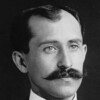Orville Wright

Orville Wright
The Wright brothers, Orvilleand Wilbur, were two American brothers, inventors, and aviation pioneers who are generally credited with inventing, building, and flying the world's first successful airplane. They made the first controlled, sustained flight of a powered, heavier-than-air aircraft on December 17, 1903, four miles south of Kitty Hawk, North Carolina. In 1904–05 the brothers developed their flying machine into the first practical fixed-wing aircraft. Although not the first to build and fly experimental aircraft, the Wright brothers were the...
NationalityAmerican
ProfessionInventor
Date of Birth19 August 1871
CityDayton, OH
CountryUnited States of America
We decided to place the motor to one side of the man, so that in case of a plunge head first, the motor could not fall upon him.
We were lucky enough to grow up in an environment where there was always much encouragement to children to pursue intellectual interests; to investigate what ever aroused curiosity.
Before leaving camp in 1902 we were already at work on the general design of a new machine which we proposed to propel with a motor.
Success four flights Thursday morning all against twenty one mile wind started from Level with engine power alone speed through air thirty one miles longest 57 second inform Press home Christmas.
When the motor was completed and tested, we found that it would develop 16 horse power for a few seconds, but that the power rapidly dropped till, at the end of a minute, it was only 12 horse power.
In our gliding experiments we had had a number of experiences in which we had landed upon one wing, but the crushing of the wing had absorbed the shock, so that we were not uneasy about the motor in case of a landing of that kind.
The ability to do this so quickly was largely due to the enthusiastic and efficient services of Mr. C.E. Taylor, who did all the machine work in our shop for the first as well as the succeeding experimental machines.
No flying machine will ever fly from New York to Paris.
When the machine had been fastened with a wire to the track, so that it could not start until released by the operator, and the motor had been run to make sure that it was in condition, we tossed a coin to decide who should have the first trial. Wilbur won.
The course of the flight up and down was exceedingly erratic, partly due to the irregularity of the air, and partly to lack of experience in handling this machine. The control of the front rudder was difficult on account of its being balanced too near the center.
A sudden dart when a little over a hundred feet from the end of the track, or a little over 120 feet from the point at which it rose into the air, ended the flight.
We were then satisfied that, with proper lubrication and better adjustments, a little more power could be expected. The completion of the motor according to drawing was, therefore, proceeded with at once.
We laid the track on a smooth stretch of ground about one hundred feet north of the new building.
One of the Life Saving men snapped the camera for us, taking a picture just as the machine had reached the end of the track and had risen to a height of about two feet.